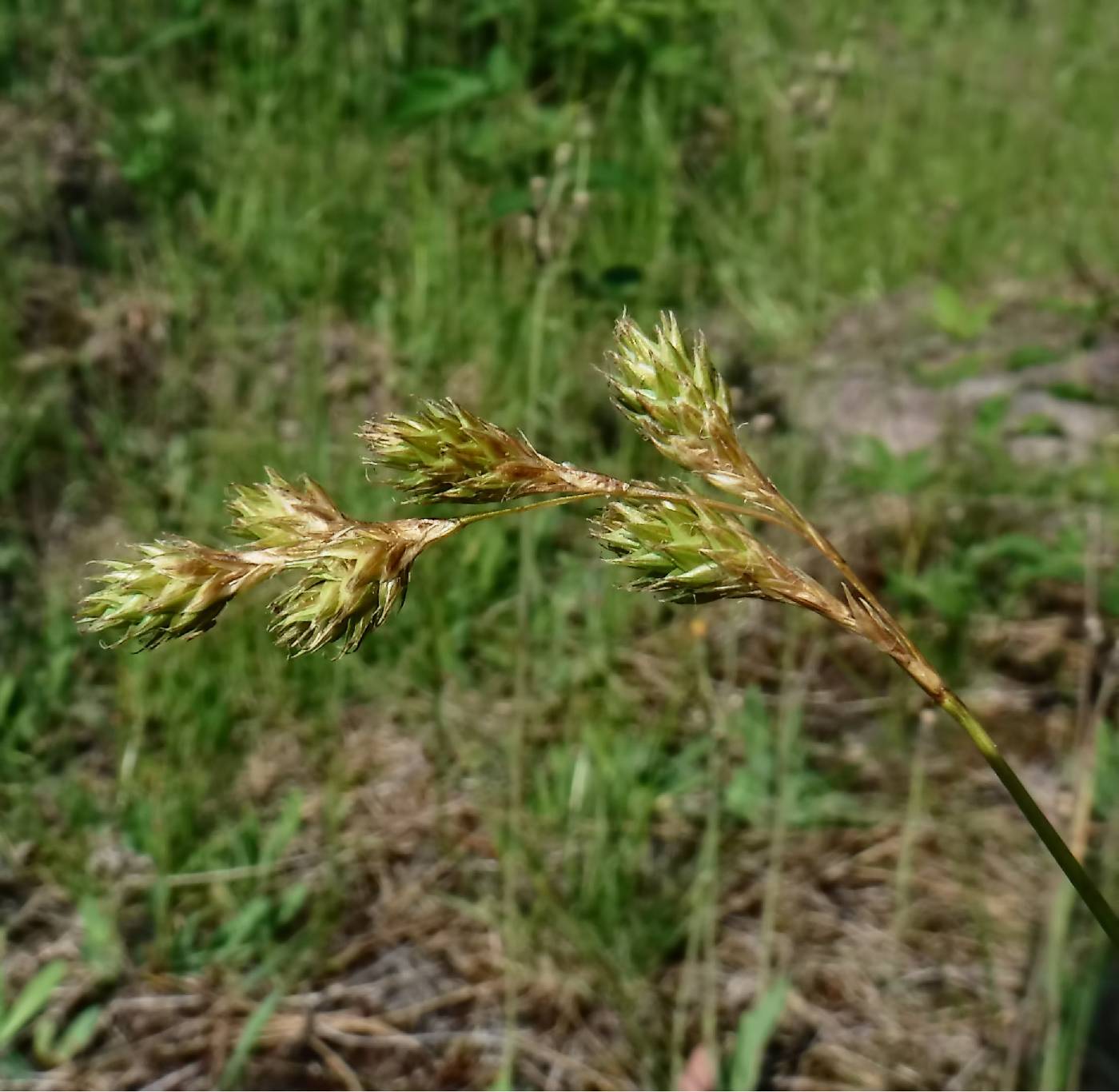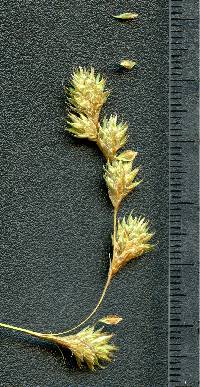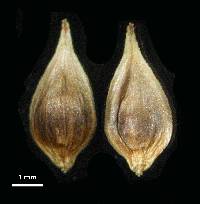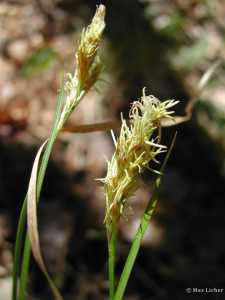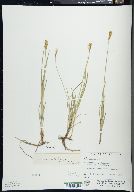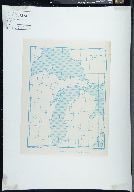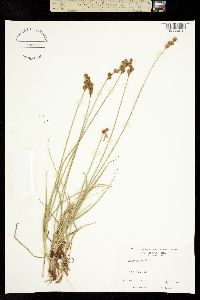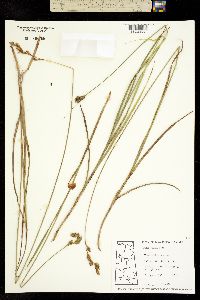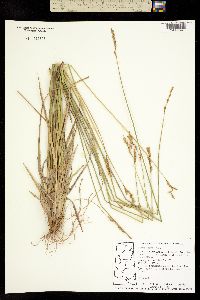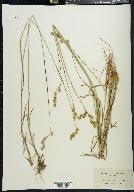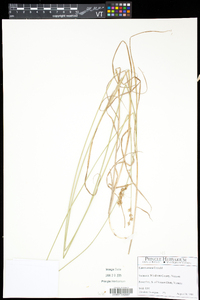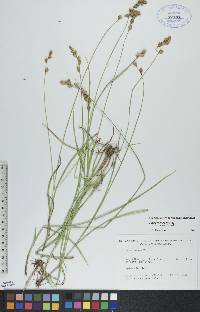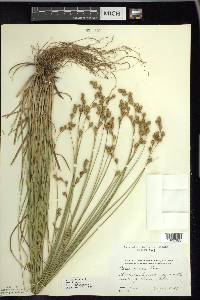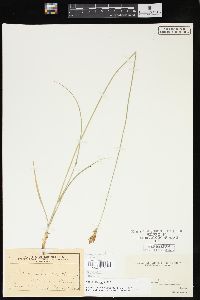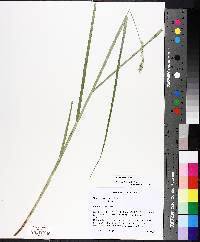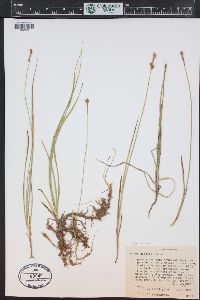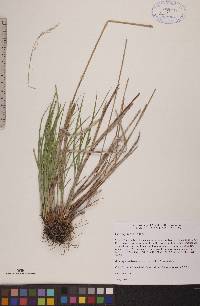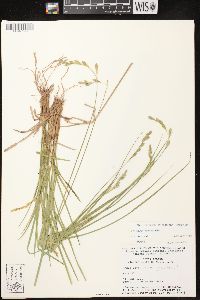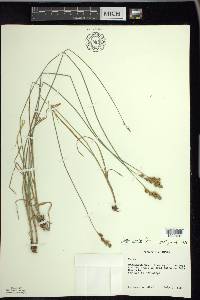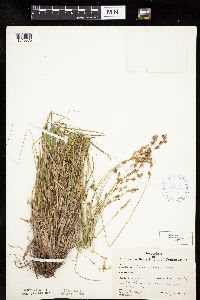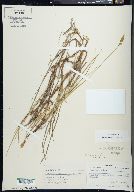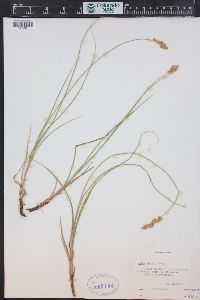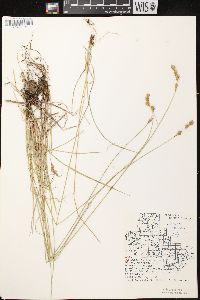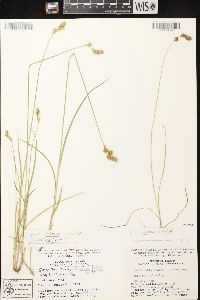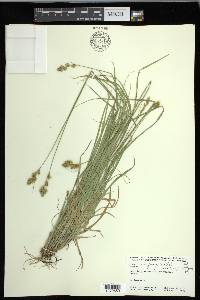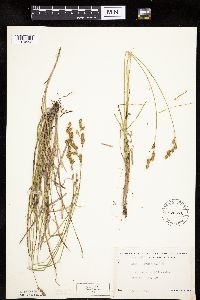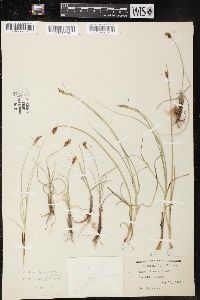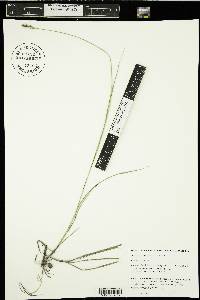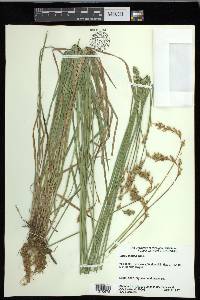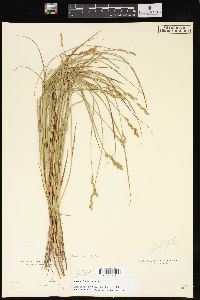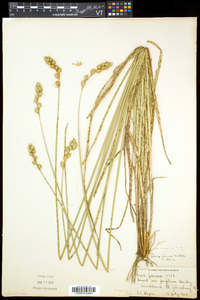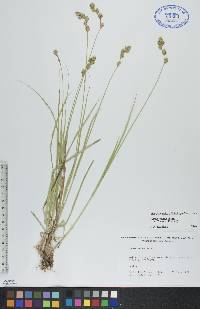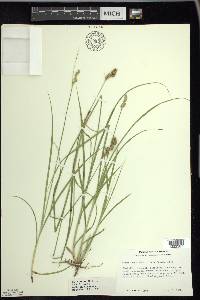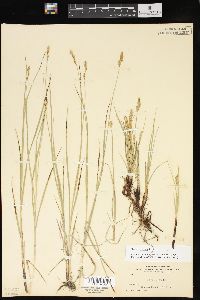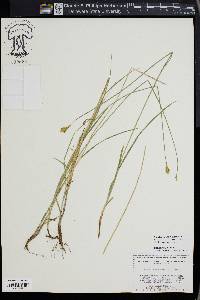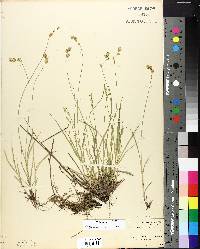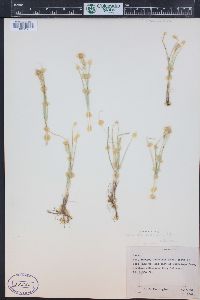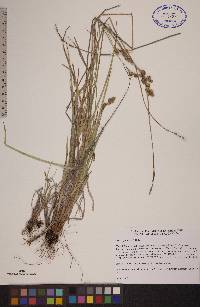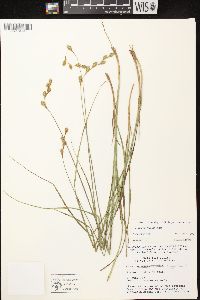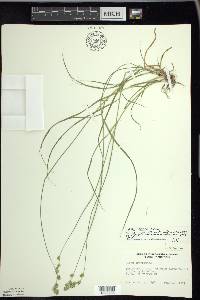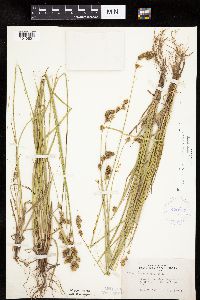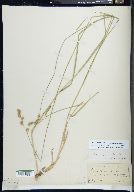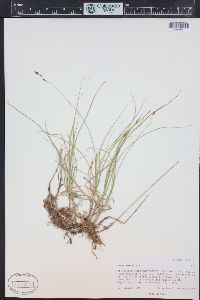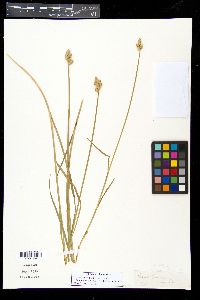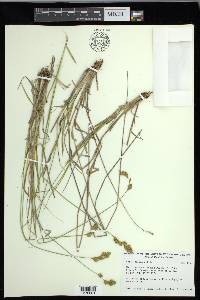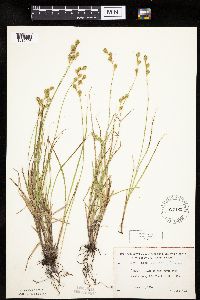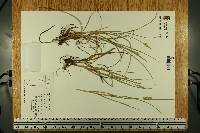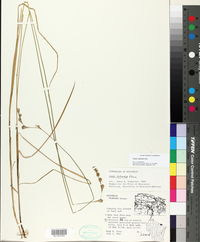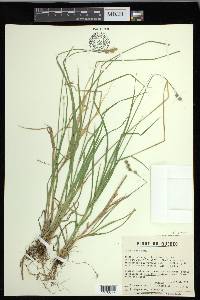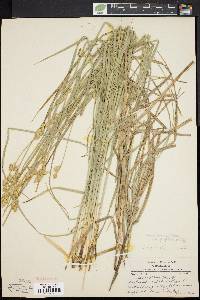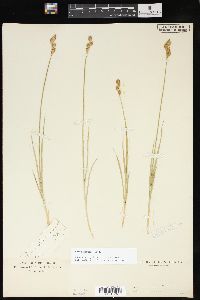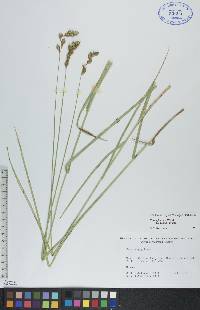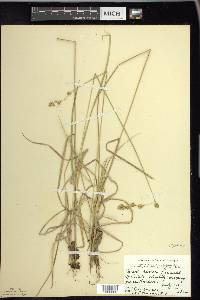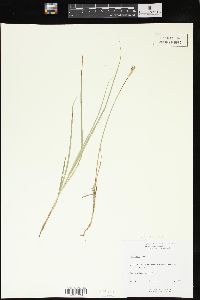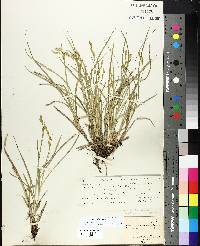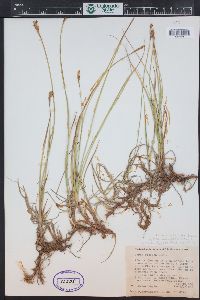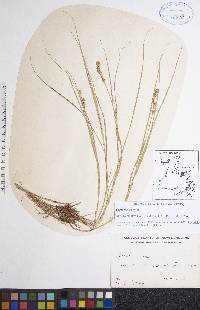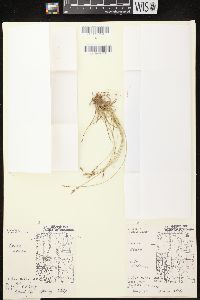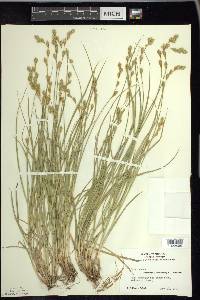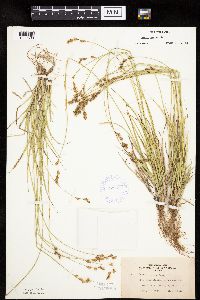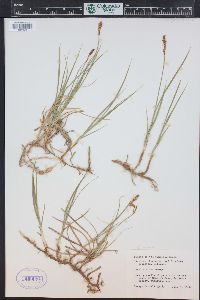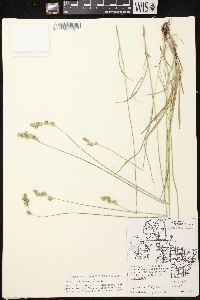Carex foenea
|
|
|
|
Family: Cyperaceae
Bronze-Head Oval Sedge, more...dryspike sedge, dry-spike sedge, wind sedge
[Carex aenea f. extrapolata Butters & Abbe] |
Plants densely cespitose. Culms 20-120 cm. Leaves: sheaths adaxially white-hyaline or green-and-white mottled, papillose, summits U-shaped, shortly prolonged beyond collar; distal ligules 2-3 mm; blades 3-6 per fertile culm, green, without auricles, 8-30 cm × 2-4 mm, pliable. Inflorescences open, usually with widely spaced spikes, flexible, brown or greenish brown, 1.5-8 cm × 7-15 mm; proximal internode 5-25 mm; 2d internode 4-12 mm; proximal bracts scalelike, sometimes bristlelike to 1 cm. Spikes 3-7(-11), usually distant, oblong to ellipsoid, 7-25 × 5-7 mm, base clavate to attenuate, apex usually rounded. Pistillate scales usually reddish brown, or green or gold in shade forms, with 3-veined green or brown midstripe, ovate, 4-5 mm, equaling, ± covering perigynia, apex acute to acuminate. Perigynia erect-ascending, green or brown, conspicuously 4-9-veined abaxially, veinless or conspicuously unequally 4-8-veined adaxially, ovate, plano-convex or concavo-convex, 3.3-5 × (1.5-)1.7-2.5 mm, 0.6-0.8 mm thick, margin flat, including wing 0.2-0.4 mm wide, smooth or ciliate-serrulate at least on distal body; beak white or brown, white margin at tip, flat, ± ciliate-serrulate, abaxial suture inconspicuous or with white margin, distance from beak tip to achene (1.4-)1.7-2.5 mm. Achenes dark brown at maturity, ovoid-orbicular, 1.3-2.1 × 1.2-1.7 mm, 0.5-0.6 mm thick, 1-1.4(-1.5) times as long as wide. 2n = 82, 84. Fruiting late spring-early summer. Dry to moist, acidic sands, gravels, open disturbed places, grasslands, open woods; 10-1000 m; Alta., B.C., Man., N.B., Nfld. and Labr., N.W.T., N.S., Ont., P.E.I., Que., Sask., Yukon; Alaska, Conn., Maine, Mass., Mich., Minn., Mont., N.H., N.Y., N.Dak., Pa., R.I., S.Dak., Vt., Wis. The distinction between Carex foenea and C. argyrantha has been obscured by emphasis on the presence or absence of veination on the adaxial face of the perigynium. In C. foenea, the adaxial face is typically veinless or has a few veins not reaching the middle of the body, though at times the adaxial veins are about as strong as those of C. argyrantha. However, the veins of C. argyrantha appear ± straight and parallel to each other compared to the curving veins of C. foenea. In addition to characters cited in the key, C. foenea has more spreading perigynia and, at maturity, strongly brown-colored pistillate scales and perigynia. The name C. foenea has been applied often in recent literature to C. siccata, a very different species with long-creeping rhizomes.
Densely tufted, aphyllopodic, 3-10 dm; main lvs 3-5 mm wide, mostly shorter than the stems; bracts inconspicuous; spikes 3-15, gynaecandrous, 6-25 mm, often basally clavate, sessile in a loose, commonly flexuous spike that may be interrupted below; pistillate scales as long as but often evidently narrower than the perigynia; perigynia planoconvex, usually turning pale to dark brown (especially over the achene ventrally) at maturity, smooth, 3.4-5 נ1.2-2.2 mm, ventrally nerveless or obscurely few-nerved, more strongly (1-)3-8-nerved dorsally, usually widest at 1/3 to 2/5 of their total length, tapering to a flattened, often ill-defined, sometimes minutely slender-tipped beak, wing-margined, the wings finely and evenly serrulate- ciliolate, not expanded above the middle of the body; achene lenticular, 1.5-2 mm. Variously in wet to dry places; Lab., and Nf. to Yukon and B.C., s. to Conn., N.Y., Pa., Mich., and Ida. (C. aenea) Gleason, Henry A. & Cronquist, Arthur J. 1991. Manual of vascular plants of northeastern United States and adjacent Canada. lxxv + 910 pp. ©The New York Botanical Garden. All rights reserved. Used by permission. |

